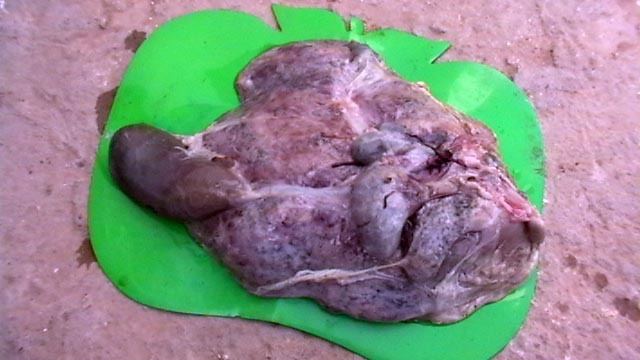 | ||
Infectious necrotic hepatitis is a disease of large animals, especially sheep, caused by Clostridium novyi infection. The primary infection is intestinal and transferred by the faecal-oral route. Spores of C. novyi escape from the gut and lodge in the liver where they remain dormant until some injury creates anaerobic conditions for them to germinate causing local necrosis and widespread damage to the microvascular system resulting in subcutaneous bleeding and blackening of the skin, hence the common name, "black disease."
Contents
In sheep
In sheep, the disease, referred to as "black disease", results from interaction of bacteria (especially Clostridium novyi) and liver fluke (Fasciola hepatica).
Symptoms
As other enterotoxemias, the disease leads to sudden death. Nevertheless, sheep with previous vaccination can show a protracted course. The rest of the flock may show loss of appetite and pica.
Post-mortem lesions
Peritoneal and thoracic cavities contains a great quantity of fluids, as does pericardial sac.
The liver is swollen with sometimes perihepatitis. Their appear a great number of necrotic foci, 3 to 4 mm diameter, which extend deeply in the organ. Hepatic lymph nodes are enlarged. The gall bladder is full.
Subcutaneous tissues are full of cyanotic venous blood. They may darken the hide, hence the name "black disease".
Control
In order to control for the disease, the Lymnaea spp snails, which are the intermediate host for the liver flukes, need to be controlled. There are three ways that have proven most effective when controlling the snail populations, they include:
